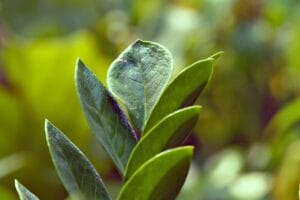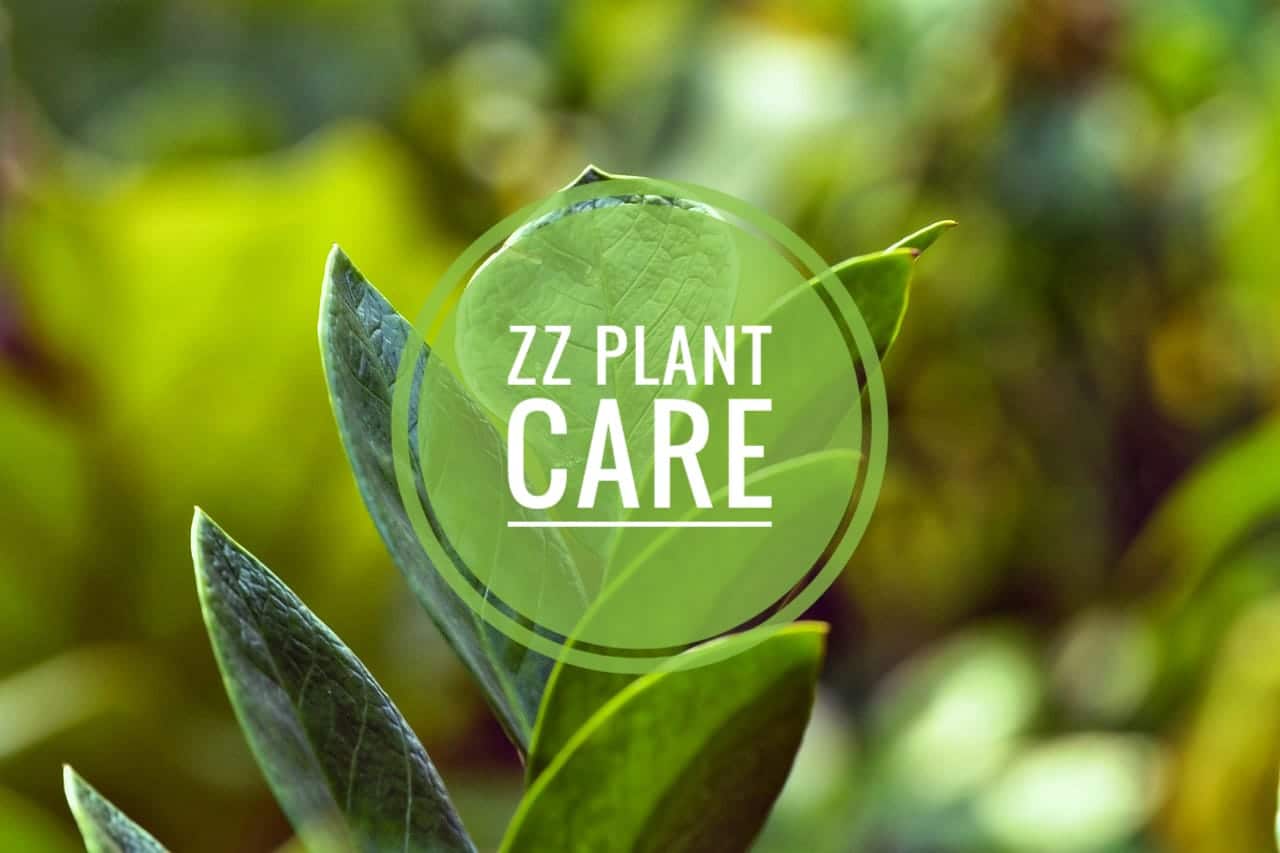If you’ve ever wished for a plant that thrives on neglect, the ZZ plant (Zamioculcas zamiifolia) is the answer. Known for its glossy leaves and remarkable resilience, this plant has become a household favorite across the world.
It’s elegant, low-maintenance and nearly indestructible — the perfect combination for new plant lovers who wants to start gardening. ZZ plant care is so easy that it is also called eternity plant, perhaps the best indoor plant.

Here’s a quick snapshot of why the ZZ plant is special:
| Feature | Description |
|---|---|
| Common Name | ZZ Plant, Zanzibar Gem |
| Scientific Name | Zamioculcas zamiifolia |
| Family | Araceae (the Arum family) |
| Native Region | Eastern Africa (Kenya, Tanzania, Zanzibar) |
| Plant Type | Tropical perennial, evergreen |
| Leaf Appearance | Glossy, waxy, oval-shaped dark green leaves |
| Growth Habit | Upright stems with thick rhizomes storing water |
| Light Requirement | Low to bright indirect light |
| Watering Need | Very low; drought-tolerant |
| Unique Feature | Can survive neglect and poor conditions for months |
History and origin
The ZZ plant originates from Eastern Africa, particularly Tanzania and Zanzibar which is why it’s often nicknamed the Zanzibar Gem.
Etymology
The name Zamioculcas zamiifolia comes from its resemblance to cycads in the genus Zamia. Over time, botanists noted its unique leaf structure and grouped it into the Araceae family.
- “Zamioculcas” refers to its similarity to cycads (Zamia plants).
- “Zamiifolia” means “leaves like Zamia.”
Cultural significance
In its native regions, the plant is valued for its ability to thrive in dry, rocky soils where few plants survive.
With its symbolic association with prosperity, strength, and endurance, it has gained popularity in feng shui as a “money plant” believed to bring luck and positive energy into homes and workplaces.
Its global popularity skyrocketed in the 1990s, when Dutch nurseries began exporting it widely. Today, the ZZ plant is a staple in homes, offices, and hotels across the world.
Growing conditions for ZZ plant care
The ZZ plant owes its reputation as an easy-care houseplant to its adaptability. Still, it has preferences that help it thrive.
- Soil: Choose a well-draining potting mix. A blend made for succulents or cacti works perfectly.
- Water: Water only when the soil is dry to the touch. Its rhizomes store water, making it drought-tolerant. Overwatering can cause root rot.
- Light: Tolerates low light but thrives best in bright, indirect sunlight. Avoid direct harsh rays that may scorch its leaves.
- Temperature: Ideal range is 18°C to 26°C. Protect it from cold drafts and frost.
- Humidity: Average household humidity is fine. It doesn’t require misting.

Types of ZZ plant
While the classic green ZZ plant is the most popular, several unique cultivars are now available:
- Classic ZZ Plant (Zamioculcas zamiifolia)
- The standard variety with dark green glossy leaves.
- Raven ZZ
- Newer and highly sought-after. Leaves emerge lime green and mature to a dramatic deep purple-black color.
- Variegated ZZ Plant
- Rare variety featuring leaves streaked or spotted with yellow and creamy white patterns.
- Dwarf ZZ Plant
- A compact version with shorter, denser growth. Perfect for desktops or small spaces.
Each type shares the same resilience but offers different aesthetic appeal for plant collectors.
ZZ plant care tips
Even though ZZ plants are low-maintenance, a few good practices will keep them thriving:
- Pruning: Remove yellow, dried, or damaged leaves to maintain shape and encourage fresh growth.
- Repotting: Repot every 2–3 years or when the rhizomes crowd the pot. Choose a slightly larger pot with drainage holes.
- Fertilizing: Feed once a month during the growing season (spring and summer) with a diluted balanced fertilizer. Skip feeding in winter.
- Cleaning: Wipe leaves with a damp cloth to remove dust. This enhances the shine and improves photosynthesis.
- Placement: Keep away from vents, heaters, or cold drafts to avoid stress.

Common problems and solutions
Even hardy plants like the ZZ plant can face a few issues:
- Yellowing leaves → Cause: Overwatering. Solution: Let soil dry completely before watering again.
- Root rot → Cause: Poor drainage and soggy soil. Solution: Repot into well-draining soil and trim rotted roots.
- Leaf curling → Cause: Underwatering or very low humidity. Solution: Water thoroughly and maintain stable room conditions.
- Pest infestation → Rare, but spider mites or mealybugs can attack. Solution: Treat with neem oil or insecticidal soap.
- Slow growth → Normal, as ZZ plants are naturally slow growers. Solution: Provide brighter light and occasional fertilizer during summer.
Uses and benefits of ZZ plant
The ZZ plant is not just beautiful; it offers practical and symbolic benefits:
- Air purification: NASA’s Clean Air Study found it can help remove toxins like xylene, toluene, and benzene from the air.
- Stress relief: Green indoor plants improve mood, focus, and productivity.
- Aesthetic value: Its symmetrical leaves and glossy appearance make it a designer favorite for modern interiors.
- Low-maintenance companion: Perfect for people who travel often or forget to water.
- Cultural significance: Considered a plant of prosperity and endurance in many traditions.
Interesting facts about the ZZ plant
- The ZZ plant is nicknamed the “Eternity Plant” because it’s nearly indestructible.
- It can survive months without water thanks to its water-storing rhizomes.
- Despite its popularity today, it was largely unknown outside Africa until the late 20th century.
- The Raven ZZ variety changes color dramatically, making it a collector’s delight.
- The plant is toxic if ingested, so keep it away from pets and children.
FAQs about ZZ plant care
Q1: How often should I water my ZZ plant?
About once every 2–3 weeks, depending on how quickly the soil dries.
Q2: Can a ZZ plant grow in a windowless office?
Yes, it can survive under fluorescent lighting, though it grows better with some natural light.
Q3: Is the ZZ plant safe for pets?
No, it contains calcium oxalate crystals that are toxic if ingested by cats, dogs, or humans.
Q4: How fast does a ZZ plant grow?
It is naturally slow-growing, producing just a few new stems each year.
Q5: Can I propagate my ZZ plant?
Yes, through division of rhizomes or leaf cuttings. However, leaf cuttings can take months to develop roots.
Conclusion
The ZZ plant is proof that not all houseplants need constant pampering. With its rich history, cultural symbolism, and remarkable toughness, it has earned its spot as one of the most popular indoor plants worldwide.
Its glossy foliage brightens up any space while requiring minimal care, making it the perfect choice for busy plant parents and beginners.
If you’ve been hesitant to bring greenery into your home, the ZZ plant is your low-maintenance ticket to a fresher, healthier, and more stylish living space. Give this resilient gem a place in your home, and it will reward you with years of effortless beauty.
